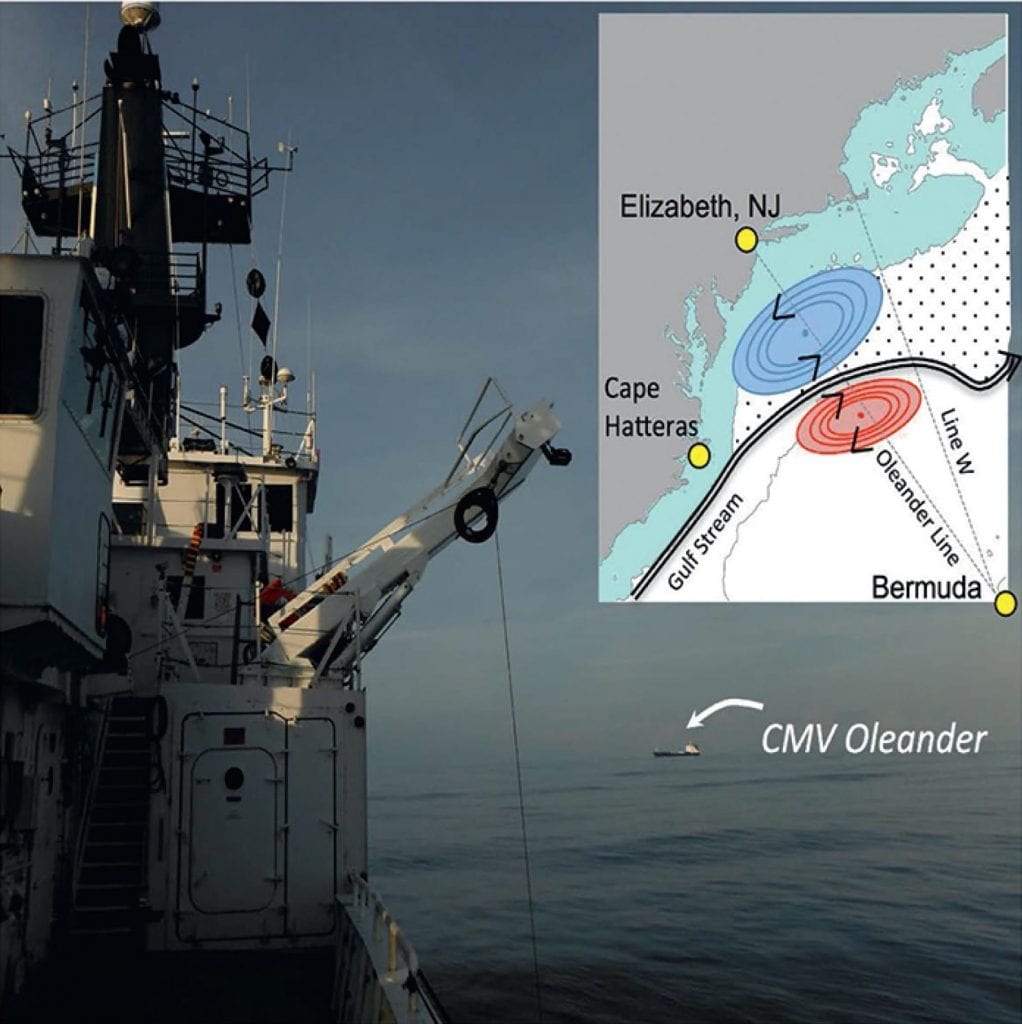The Gulf Stream, one of, if not the world’s strongest ocean current, plays a major role in earth’s climate by transporting heat from the tropics to the mid latitudes. Changes in the strength of this current could therefore have profound impact. But how to quantify the intensity of the Gulf Stream? Based on upper-ocean velocity observations from the Bermuda supply vessel M/V Oleander and full-depth data from bottom-anchored moorings, Andres, Donohue and Toole, 2020 report analyses of Gulf Stream transport for the 2010-2014 period that are smaller than transport estimates made some 25 years earlier in the same general region. But lacking continuous observations over this time span, the researchers cannot say if the transport decline is a long-term trend or manifestation of undersampled long-period oscillations of the Stream. Sustained observations over the full ocean depth are needed.
This research uses observations from two venerable in situ measurement programs in the North Atlantic. These are WHOI’s Line W Program (https://www.whoi.edu/multimedia/line-w/ https://scienceweb.whoi.edu/linew/index.php ) and URI/Stony Brook/BIOS’s ongoing Oleander Program (http://oleander.bios.edu/about/).

